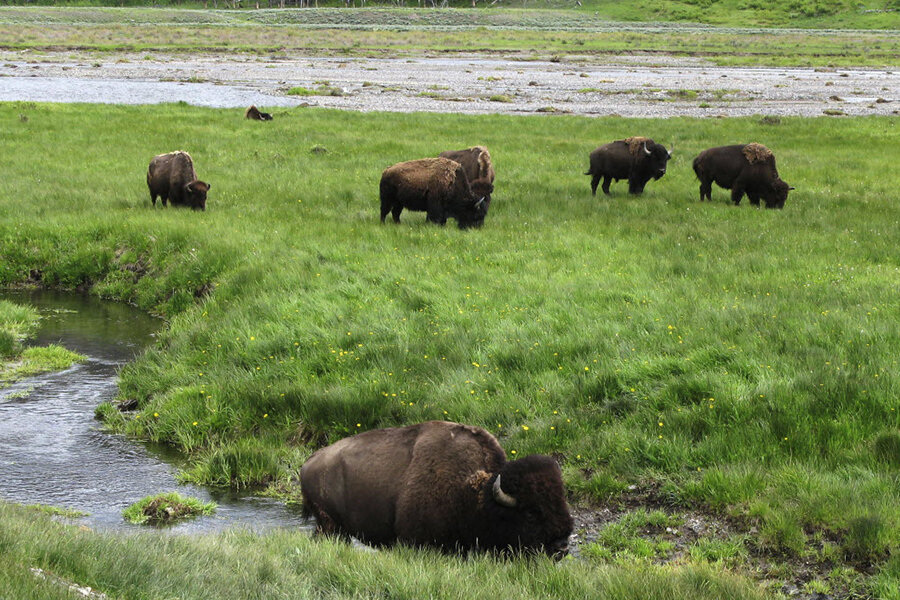Montana governor allows bison to roam outside Yellowstone
Loading...
| Billings, Mont.
Wild bison will be allowed to migrate out of Yellowstone National Park and stay in parts of Montana year-round under a Tuesday move by Gov. Steve Bullock that breaks a longstanding impasse in a wildlife conflict that's dragged on for decades.
The Democratic governor's decision likely won't end the periodic slaughters of some bison that roam outside Yellowstone in search of food at lower elevations. But it for the first time allows hundreds of the animals to linger year-round on an estimated 400 square miles north and west of the park.
The move has been eagerly sought by wildlife advocates – and steadfastly opposed by livestock interests. Ranchers around Yellowstone are wary of a disease carried by many bison and the increased competition the animals pose for limited grazing space.
Gov. Bullock said in a statement he will continue to pressure the National Park Service to reduce Yellowstone's population of roughly 5,000 bison. Absent from Tuesday's announcement was a population target of 3,500 bison that the governor previously proposed as a condition of expanding where bison can roam.
Still, the governor expressed confidence that the livestock industry would be protected, and referred to his decision as a "modest expansion" of conditions under which bison can remain outside the park.
Supporters of the change said its significance was much greater: "It's a historic step forward for bison," said Stephanie Adams with the National Park Conservation Association.
Federal officials and representatives of American Indian Tribes that collaborate with the state on managing bison will have to sign off on Bullock's decision, but little if any opposition is expected.
Yellowstone has one of the largest wild bison herds remaining in the world. Since the 1980s, more than 6,300 have been slaughtered and almost 1,900 killed by hunters, largely in response to fears over the spread of the disease brucellosis.
Roughly half of the park's bison test positive for exposure to the disease, which can cause pregnant animals to abort their young. No bison-to-cattle transmissions of brucellosis have been documented and most infections of cattle over the past decade have been traced to diseased elk. Yet it remains a major concern for ranchers who can find their operations stigmatized after an outbreak.
Jay Bodner with the Montana Stockgrowers Association said Bullock's decision sets up a scenario in which the park's bison population could continue to increase. That will create pressure for still more expansions of their habitat without resolving concerns over disease, he said.
"We'll have continuing need to increase these zones" where bison are allowed, Mr. Bodner said. "We don't know that (state agencies) have adequate resources to make sure bison remain within these zones."
He said state officials need to pursue more aggressively negotiations with the Park Service on maintaining a more consistent bison population size.







